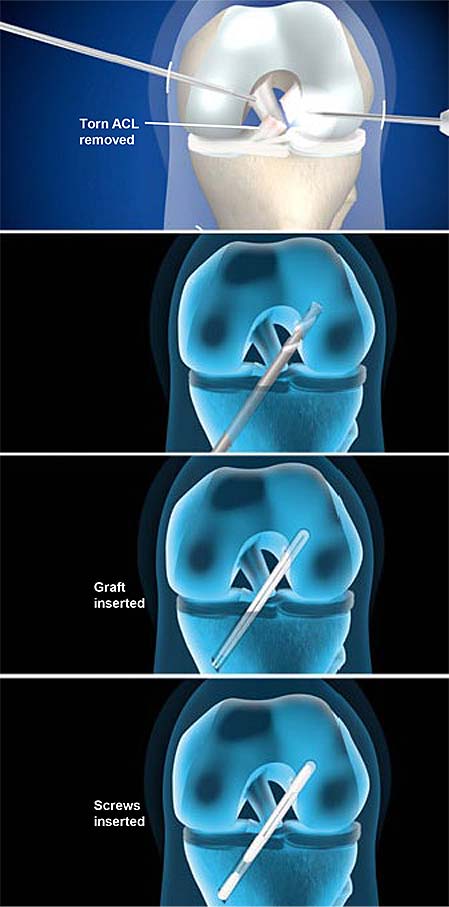Overview
This procedure replaces a damaged or torn anterior cruciate ligament, commonly called the ACL, with a tendon graft held in place by Arthrex RetroScrews. The surgeon uses a small camera called an arthroscope to visualize the inside of the knee during the procedure.
 Preparation
Preparation
In preparation for the ACL reconstruction, the patient is anesthetized and positioned and the graft is prepared. The surgeon may harvest the tendon graft from the patient’s own body at this time, or, prior to the procedure, the graft may have been harvested from a donor.
Clearing the ACL
To access the ACL, the surgeon creates a series of small incisions on the sides of the knee. The surgeon works through these incisions, using arthroscopic instruments to clear away the damaged ACL and clean the joint.
Inserting the Graft
The surgeon drills a tunnel diagonally through the tibia and into the femur. The tendon graft is pushed up through this tunnel and into position, spanning the space between the tibia and femur.
Anchoring the Graft
The surgeon now anchors the graft within the knee with a series of RetroScrews. These screws, positioned at the ends of the tunnel, tightly grip the tendon graft and anchor it securely within the bone. The surgeon will test the graft by flexing and extending the knee through its full range of motion.
End of Procedure and Aftercare
When the procedure is complete, the incisions are closed and bandaged and the knee is immobilized. After two or three weeks, the patient will begin performing limited exercises while wearing a knee brace, and will gradually progress to a physical therapy program designed to help the knee regain strength and range of motion.
